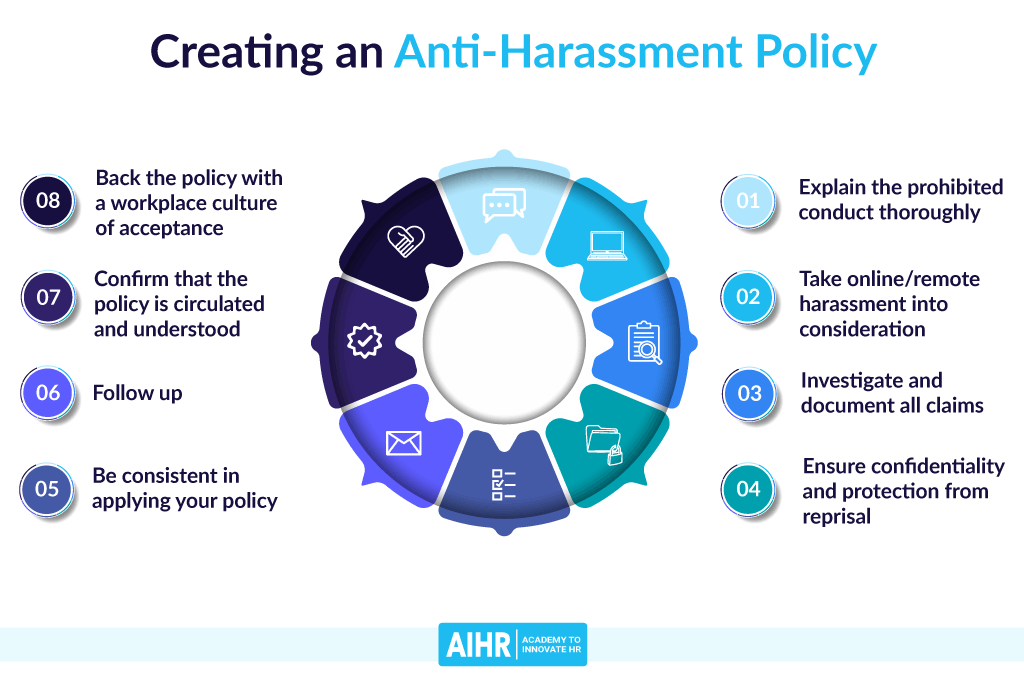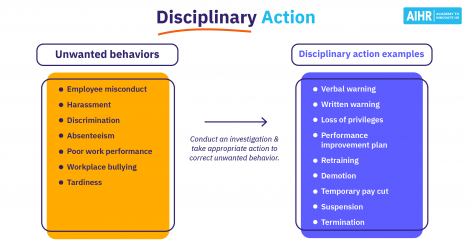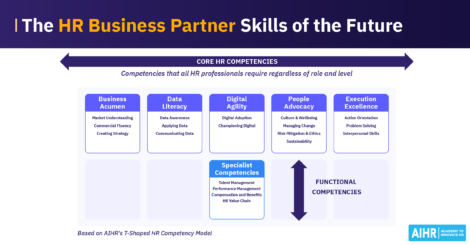How to Create an Anti-Harassment Policy: A Practical Guide

Workplace harassment occurs more often than you might think, and it can drive away top talent and tarnish a company’s reputation. To avoid this, it’s crucial to have a strategy for combatting harassment. How can your organization create an effective anti-harassment policy? Let’s go over some practical steps you can take.
Contents
What is an anti-harassment policy?
Why does your organization need an anti-harassment policy?
Elements of an anti-harassment policy
Tips for writing and applying your anti-harassment policy
What is an anti-harassment policy?
An anti-harassment policy aims to address and prevent antagonistic situations that violate the dignity of employees. It pertains to single or repeated incidents of intimidation, humiliation, degradation, bullying, or other undesirable verbal, non-verbal, or physical conduct toward one person or a group of people.
The policy should cover sexual and quid pro quo harrasment, as well as harassment related to race, ethnicity, national origin, disability, religion, age, gender, sexual orientation, gender identity, etc.
Why does your organization need an anti-harassment policy?
A formal anti-harassment policy is the first line of defense to keep harassment from occurring in your workplace. It conveys that your organization will not tolerate discriminatory or menacing conduct.
If you retain and abide by an anti-harassment policy, it shows employees that you care about their safety and wellbeing by fostering a respectful, engaging, productive and inclusive work environment.
An employer committed to anti-harassment procedures will be proactive in addressing hostile situations to prevent escalation and protect itself against costly legal liability.
Elements of an anti-harassment policy
Regardless of size, all organizations need to prioritize to discourage and resolve demoralizing workplace situations with an effective anti-harassment policy. You can take a look at some anti-harassment policy examples here and here to help you formulate your own.
A thorough policy will include the following sections:
Intent and scope State the purpose of the policy and who it applies to.
– Explain that the policy exists to uphold a safe, positive working environment.
– Name the types of conduct that won’t be tolerated (intimidation, humiliation, offensive dialogue, etc.)
– Identify the parties who will be held to the standards of the policy (employees, managers, directors, contractors, customers.)Definition of harassment Define what harassment entails by again citing the behaviors that are not acceptable and providing examples. Assert that what is stated is not an exhaustive list. (See tips below for more details.) Reporting of harassment incidents Explain what employees can do if they witness or experience harassment or any questionable conduct that has the potential to become grievous or pervasive.
Typically, the employee should immediately report the incident to the supervisor, but certain situations will require an alternative method. If the supervisor isn’t available or is directly involved in the episode, employees should have access to the next-level manager or a specific person in HR.
The policy should clearly state that the organization takes all harassment complaints seriously, and complainants will be treated with respect. Investigation procedure Outline how a harassment claim will be handled:
– All allegations will be investigated promptly, thoroughly, and objectively.
– Details of the complaint will be collected, documented, and validated with evidence.
– A factual report will be prepared in writing.
– Remedial action will be taken when necessary and according to the circumstances.Disciplinary action Include a brief statement that overviews the consequences for participating in harassing behavior.
Discipline for violating the anti-harassment policy should align with the severity of the misconduct. At a minimum, a verbal or written warning should be issued with guidance for how to avoid future reprimands. Further action to be taken can include job reassignment, required sensitivity training, suspension, demotion, or termination of employment.
Tips for writing and applying your anti-harassment policy
To craft and sustain effective policies, you need to make sure they can stand up to a broad range of factors. Here are some approaches to consider when you’re developing, revisiting, or reinforcing your organization’s anti-harassment policy:
1. Explain the prohibited conduct thoroughly
Be specific about what harassment looks like to leave as little room for interpretation as possible. Here are some common behaviors and specific examples of harassment:
Behaviors: Direct insults, threats of harm, bullying, victimization, offensive discussions and gestures, spiteful gossip, etc.
Examples:
- Derogatory or condescending comments or teasing regarding a person’s heritage, religion, or beliefs.
- Unwanted sexual advances and threats or posing questions of an intimate nature.
- Physical threats or assault.
- Improper or unwanted touching.
- Outbursts of anger and destruction of property.
- Making offensive sounds or gestures toward someone.
- Distributing inappropriate sexual material or discriminatory photos, videos, or internet postings.
- Spreading malicious rumors to discredit someone.
- Sabotaging or destructively interfering in the work of others.
- Singling someone out to do demeaning tasks unrelated to their job.
2. Take online/remote harassment into consideration
Your policy should state that the prohibited behavior is not limited to in-person situations but also applies to online/remote interactions.
Many people have experienced an increase in harassment and hostility since the beginning of the pandemic and moving to remote work. According to a Project Include report (page 11), 45% of workers have seen harassment in chat, and 41% have seen it in email and video meetings.
Sometimes people lose their discretion and behave differently behind a screen than they would face-to-face. This is especially the case when working remotely blurs the line between their home and professional lives. It can embolden some to be thoughtless or inappropriate during digital communication.
3. Investigate and document all claims
Take swift action every time an employee alleges harassment, even if you have doubts about its validity. Equally as important is never to dismiss or ignore a complaint made against a senior manager or another person of authority, despite it being a very complex scenario.
In addition, be aware of the possibility of false claims that are meant to disparage someone. It can be tricky to spot these, but a comprehensive investigation will often reveal the truth.
You must take each complaint seriously and thoroughly investigate it with an open mind and without pre-judging the situation. Employees need to perceive Human Resources departments as receptive toward harassment complaints in order to trust that they will be heard and treated with consideration when coming forward.
Your policy should outline specific steps to guide you through the investigation and for proper documentation during each stage of the process. Providing clear communication to all affected parties about what actions and decisions have transpired is also key. Resolving issues promptly and appropriately can help you avoid more harassment claims down the road.
4. Ensure confidentiality and protection from reprisal
You must handle harassment claims discreetly. You should share the details of the incident and the investigation on a need-to-know basis only. Warn all those involved against discussing the circumstances with anyone else. This also includes revealing the particulars to trusted HR colleagues who are not participating in the inquiry.
Maintaining as much confidentiality as feasible will guard the integrity of the process and keep employees’ trust intact.
Your anti-harassment policy and procedures must also protect employees against retaliation. Those who report misconduct or cooperate in the investigation should not be adversely affected either directly or indirectly. They should not feel as if they are being intimidated or punished by having their employment or working conditions put in jeopardy. Retaliation itself is a form of harassment and cannot be allowed to take place.
5. Be consistent in applying your policy
Uniform implementation of standardized procedures is fundamental to having an effective anti-harassment policy. Follow the complaint process you’ve outlined in your policy not only for investigation but also regarding the consequences and how you communicate the investigation results.
Adhere to the process for every claim of harassment, regardless of the circumstances. For example, don’t be tempted to brush off an employee who has a history of prior complaints. You are obligated to refrain from forming an opinion or passing judgment based on your previous interactions with this person.
6. Follow up
Once you conclude a harassment investigation, you should do some follow-up to ensure that the issue has been completely resolved.
Check in with the complainant and see how they are doing. Make sure they are satisfied with the outcome and feel comfortable in their work environment again.
If you had to take disciplinary action against someone, periodically review whether they are now complying with the anti-harassment policy and have completed whatever corrective action may have been required.
This stage is also an excellent time to evaluate whether your policy needs any changes that the situation may have brought to light.
7. Confirm that the policy is circulated and understood
Your anti-harassment policy will not be effective unless all employees are aware of and understand it. Once you implement the policy, you should distribute it to everyone and make it part of every new hire’s onboarding process. It’s wise to have a signed acknowledgment form on file for each employee to prove that they have been informed of the policy.
You can build anti-harassment awareness by scheduling training. An online program can make it very accessible and offer means for recognizing different types of harassment and knowing how to respond to it. Managers should also have separate instructions on handling complaints from their team members and partner with HR. These learning opportunities will also reinforce the organization’s commitment to fighting harassment.
8. Back the policy with a workplace culture of acceptance
Leadership should set the tone for a safe workplace. Teasing, chiding, or drawing unwanted attention to employees should not be part of everyday interactions.
HR should do its best to encourage an anti-harassment culture. Don’t hesitate to caution leaders about any potentially problematic exchanges you observe or hear about.
When your organization commits to building a positive environment of respect and acceptance, negative treatment of others will be a glaring contradiction to the norm. This will help employees feel more comfortable reporting it if it does occur.
Finishing points
Every organization needs to take harassment seriously and be equipped to confront it with a well-defined anti-harassment policy that includes a consistent, impartial process for handling complaints. This will help your organization prevent harassment and discrimination in the workplace and navigate the many variables that are bound to come forth if it does occur.
Once you establish your policy, make sure to periodically review and update it, so it remains as relevant as possible.
Weekly update
Stay up-to-date with the latest news, trends, and resources in HR
Learn more
Related articles
Are you ready for the future of HR?
Learn modern and relevant HR skills, online












